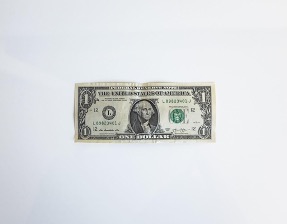The Unexpected Dollar Rally: Implications for Investors
The U.S. dollar rally has recently defied expectations, increasing by 2.5% from its recent low against a basket of global currencies. This surge is backed by strong U.S. economic data, which brings fresh implications for investors.

A Boosted Greenback: Causes and Impact
Investors had net futures bets against the dollar at $12.34 billion in the last week of May according to the Commodity Futures Trading Commission. Nevertheless, the dollar has proven resilient, hitting near its highest level since March. This strength is largely due to:
- Robust employment gains in May, outperforming expectations.
- Increased consumer spending and new home sales.
- High Federal funds rate standing between 5% and 5.25% – higher rates increase the dollar’s appeal.
Consequently, the market now anticipates the Federal funds rate to end 2023 at 4.988%, compared to the 4.188% expectation in early May.
For investors, a dollar rally is a mixed blessing. It tightens credit conditions, which may affect risk assets. It also weighs on U.S. exporters’ and multinationals’ profits. However, it can provide better yield returns for those holding dollar assets.
The Bearish View and Federal Reserve Role
Despite the dollar’s current rally, many investors believe a bearish view is warranted. They argue that the Federal Reserve’s likely end to interest rate increases will soon put pressure on the dollar. While Reuters reports that the USD stands 15% above its post-pandemic low, these expectations could indicate a decline in the medium term. UBS Global Wealth Management, for example, currently ranks the dollar as its “least preferred” currency.

The European Central Bank’s Influence
Further complicating matters, the European Central Bank (ECB) has hinted at additional policy tightening. This could potentially reduce the dollar’s yield advantage over the euro and other currencies, posing further risks for dollar assets.
Outlook for the Rest of 2023
Despite these variables, it is possible that there might be a pause before the dollar’s decline. One contributing factor could be a wave of U.S. government bond issuance, expected later this year. This may drain liquidity from the market, which might then create higher demand for dollars.
However, many experts still expect the dollar to decline, especially as the likelihood of the Fed holding off further rate hikes becomes clearer later this year.
Takeaways for Investors
In the face of these conflicting trends and expectations, investors should:
- Be aware of potential risks in dollar-denominated investments.
- Carefully monitor the actions of the Federal Reserve and ECB.
- Consider the impact of a strong dollar on U.S. exporters and multinationals.
- Monitor forthcoming U.S. government bond issuances.
How are alternatives being impacted?
It’s a mixed bag. A strengthened dollar could dampen foreign investors’ interest in U.S. private equity and real estate thanks to higher costs for investing. On the other hand, domestic investors might find US private equity and property more attractive as foreign competition decreases.
For those invested in MCAs, a strong dollar could potentially increase repayment rates for merchants, as borrowers find it more costly to service their debts. Collectibles, often seen as a hedge against traditional market fluctuations, might experience increased demand as investors seek to diversify away from dollar-heavy portfolios.
Of course, the specifics of how your own portfolio reacts to the strengthening dollar will depend on individual asset performance, diversification, and the pace of any future dollar declines.
If you want to get started with MCA investing, you can do that here.
